ASUSTeK Computer 1210 3G SMART PHONE User Manual USERS MANUAL 2
ASUSTeK Computer Inc 3G SMART PHONE USERS MANUAL 2
Contents
- 1. USERS MANUAL 1
- 2. USERS MANUAL 2
USERS MANUAL 2

Chapter 5
42
To reset your phone
1. On the Home screen, press Start > More > Tools > Default Settings.
2. Enter 1234 to conrm that you want to restore default settings and press OK .
The phone will restart automatically after it has been reset.
5-7 Adding and removing programs
You can use ActiveSync to add programs to your phone or add a program directly from the Internet.
To add programs
1. Download the program to your PC.
2. Read any installation instructions or documentation that comes with the program. Many programs
provide special installation instructions.
3. Connect your phone to the PC.
4. Double-click the *.exe le.
• If the executable le is an installation wizard, follow the instructions on the screen. Once the
program has been installed on your PC, the wizard will automatically transfer the program to
your phone.
• If an installation wizard does not start, you will see an error message stating that the program is
valid but that it is designed for a different type of PC. You will need to copy this program to your
phone. If you cannot nd any installation instructions for the program, use ActiveSync to copy
the program le to the Program Files folder on your phone.

43
Managing Your Smartphone
To remove a program
Programs that come with the phone cannot be removed.
1. On the Home screen, press Start > Settings > Remove Programs.
2. Scroll to the program to remove.
3. Press Menu > Remove.
5-8 Managingandbackinguples
There are a couple of ways to manage your les. You can use the File Explorer on your Smartphone
or use ActiveSync on your PC.
You can back up les to your PC using ActiveSync or copy les to a storage card on your phone. You can
also efciently manage your les and folders using the File Explorer program on your phone. Changes
you make to the information on one PC will not affect the information on the other PC. If you want to
automatically update information on both your phone and PC, synchronize the information instead. For
more information about copying and synchronizing les, see ActiveSync Help on your PC.
TocopyaleusingActiveSync
Copying a le results in separate versions of a le on your phone and PC. Because the les are not
synchronized, changes made to one le will not affect the other.
1. Connect your phone to your PC.
2. In ActiveSync, click Explore.
3. Go to the le that you want to copy on your phone or PC.
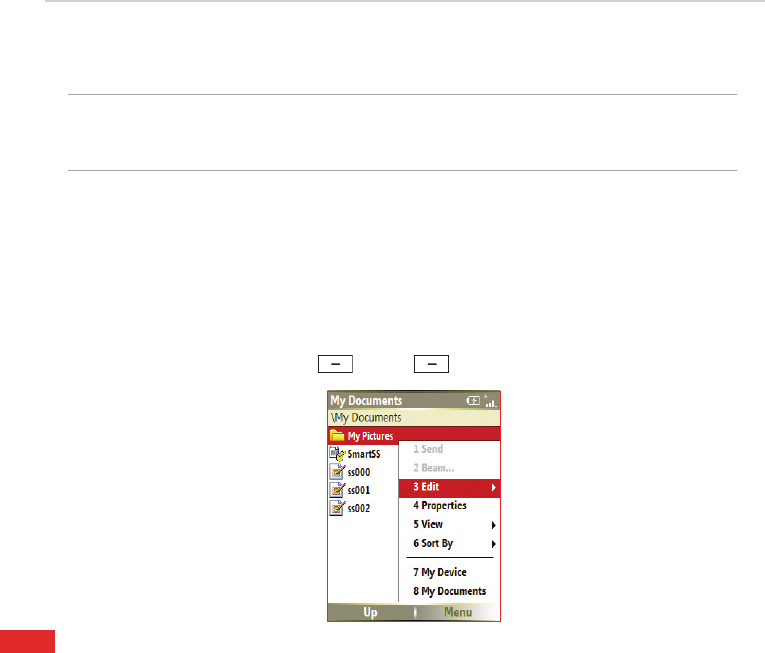
Chapter 5
44
4. Do one of the following:
• To copy the le to your phone, right-click the le, and click Copy. Right-click the desired folder
on your phone, and click Paste.
NOTE To copy les to a storage card, insert a micro SD card (see 1-4 Installing and
removing a micro SD card). You can play MP3 and other media les directly
from a micro SD card inserted into your phone.
• To copy the le to your PC, right-click the le and click Copy. Right-click the desired folder on
your PC, and click Paste.
Using File Explorer
File Explorer allows you to manage the les and folders on your phone just like you do on your PC.
To start File Explorer
• On the Home screen, press Start > More > File Explorer.

45
Managing Your Smartphone
Once in the File Explorer application, you can do the following:
TO DO THIS
Create a new folder Go to where you want to create the new folder. Press Menu > Edit >
New Folder. Enter a name for the new folder and press Action.
Rename a le or folder Select the le or folder that you want to rename, and press Menu >
Edit > Rename.
Delete a le or folder Select the le or folder that you want to delete, and press Menu > Edit
> Delete.
Beam a le Select the le that you want to send. Press Menu > Beam. Select the
device to which you want to send and press Beam.
Send a le by e-mail Select the le to send, press Menu > Send > Outlook E-mail. The
Outlook E-mail screen will open with the selected le already attached.
Display information about a le
or folder
Select the le or folder, and press Menu > Properties.
Sort les and folders Press Menu > Sort By, and select a sort option.
Move a le or folder from one
location to another
Select the le or folder that you want to move. Press Menu > Edit >
Cut. Navigate to the new location and press Menu > Edit > Paste.
Duplicate a le or folder Select the le or folder that you want to duplicate. Press Menu > Edit
> Copy. Navigate to the new location and press Menu > Edit > Paste.

Chapter 5
46

47
Chapter 6 Getting Connected
You can set up connections to the Internet and corporate network at work to do such activities as browse
the Internet or intranet, send and receive email and instant messages, and synchronize information
using ActiveSync.
With an active connection, you can browse the web, download e-mails, chat using MSN Messenger, or
synchronize wirelessly with the server. Check with your Internet Service Provider to see if a connection
has already been set up for you, and if over-the-air conguration is supported.
6-1 Connecting to the Internet
On the Home screen, press Start > Settings > Connections to open the Connections screen.
Connections settings allow you to set up Dial-up, Virtual Private Network (VPN), Bluetooth, Proxy,
and General Packet Radio Service (GPRS) connections, so you can connect to the Internet or your
corporate network.
Dial-up connection
To create a Dial-up connection
Every network connection is different. You should gather all of the relevant information or network
settings you need before starting this process.
1. On the Home screen, press Start > Settings > Connections > Dial-up.
2. Press Menu > Add.

Chapter 6
48
3. Enter the appropriate information.
NOTE In Connects to, select The Internet to connect directly to the Internet, Work
to connect to your corporate network, WAP Network to connect to a Wireless
Application Protocol network, or Secure WAP Network to connect to secure WAP
sites, such as a bank.
4. Press Done .
GPRS, Proxy, and VPN connections
You can create GPRS, Proxy, and VPN connections using the same procedure as that for a Dial-up
connection.
GPRS connection
GPRS is a high-speed transmission through the mobile phone network, which provides permanent
online connection. To use GPRS to connect to the network, you need to apply for GPRS service with
your Internet Service Provider.
Proxy connection
If you are connected to your ISP or private network during synchronization, your Smartphone should
download the proper proxy settings from your PC. If these settings are not on your PC or need to be
changed, ask your Internet Service Provider or network administrator for the proxy server name, server
type, port, type of Socks protocol used, and your user name and password. A proxy connection is used
to access the Internet using an existing connection to your corporate network.

49
Getting Connected
VPN connection
A VPN connection helps you to securely connect to servers, such as a corporate network, using an
existing Internet connection. Ask your network administrator for your user name, password, domain
name, TCP/IP settings, and host name or IP address of the VPN server.
Changing option settings
To specify the number of redial attempts, time to wait before disconnecting, and how your PC connects
to the network, access the Options screen.
To access the Options screen
1. On the Home screen, press Start > Settings > Connections.
2. Press Menu > Advanced > Menu > Options.
Adding a URL exception
Some companies use periods in their intranet URLs (for example, intranet.companyname.com). A
Work URL exception tells Internet Explorer Mobile to look on the Work network to nd the URL instead
of searching the Internet.
To add a URL exception
1. On the Home screen, press Start > Settings > Connections.
2. Press Menu > Advanced > Menu > Work URL Exceptions.
3. Press Menu > Add.

Chapter 6
50
4. In URL Pattern, enter the URL, and press Done .
NOTE Separate multiple URLs with a semicolon (;).
You should not create URL exceptions for URLs on the Internet.
6-2 Using your phone as an external modem
Using Modem Link, you can use your Smartphone as an external modem for a PC or another device,
such as a PDA, by using an USB connection.
Setting up a USB connection
To set up a USB connection.
1. Make sure that your phone is not connected to another device and ActiveSync is disabled on your
PC by launching Activesync, going to File > Settings > Connection Settings and deselecting the
checkbox Allow USB connections.
2. On the Home screen, press Start > More > Tools > Modem Link.
3. In Connection, select USB.
4. To set up a GPRS connection, enter the Access point name, which you can obtain from your
Internet Service Provider.
5. Connect your Smartphone to the PC using the USB sync cable and insert the Getting Started CD
into your PC’s CD-ROM drive.
6. Press Activate and then press Done .
7. Insert the Getting Started CD into the CD-ROM drive of your PC. The installation of the USB driver
will start automatically. If needed, click Browse and choose the CD drive and root folder where the
modem driver is locate on the CD.

51
Getting Connected
8. Click Next and wait for the installation to complete.
9. Press Finish.
10. On your PC, click Start > Settings > Control Panel > Phone and Modem Options.
11 Click the Modems tab, select the new modem from the list, and click OK.
12. To set up a GPRS connection, double-click the USB Modem Dialer le on the CD and enter the
Access point name.
13. Click Dial.
NOTE To deactivate the modem link, press Menu and select Deactivate.

Chapter 6
52
6-3 Using Opera for Windows Mobile
You can Opera browser to connect to the Internet through an ISP or a network
connection to browse the Web.
NOTE Make sure that you have set up your Smartphone’s
connection (see 6-1 Connecting to the Internet).
Getting Started
Opening Opera Browser
On the Home screen, press Start > Opera.
By default the Opera main screen contains a search engine and links to Opera´s websites. Use the
thumbstick and softkeys to navigate trough the application.
TO DO THIS
Change connection options 1. Press Menu > Tools > Settings > Network.
2. Select network and type the HTTP and HTTPS Proxy. You can also
enable different security protocols.
Manage bookmarks 1. Press Menu > Tools > Manage bookmarks.
2. Press Menu to Add, Edit or Delete a bookmark. You can also create a
folder and import favorites from Internet Explorer.
Go to a Web page Press Menu > Go to enter or change the page address. Type in the
address, and press ok to open the page. You can also use this screen to
access the Bookmarks and History folders.
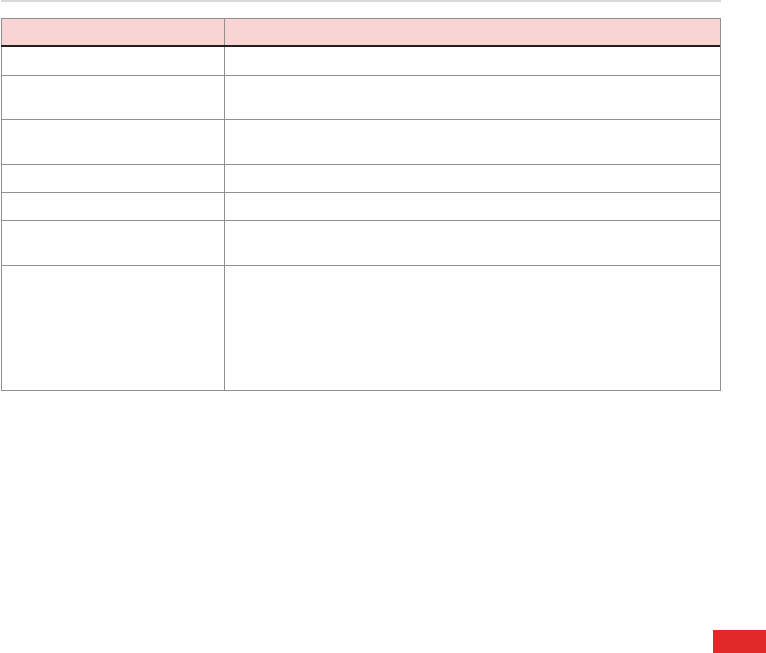
53
Getting Connected
TO DO THIS
Open multiple Windows Press Menu > Windows > New Window
Change the size of text on Web
pages
Press Menu > Display > Zoom and select the size you want.
Show or hide pictures on Web
pages
Press Menu > Display > Load Images to Select (Show) or Deselect (Hide)
this function.
View a page in full screen mode Press Menu > Display > Full Screen.
Exit full screen mode Press one of the soft keys to automatically return to a normal screen mode.
Change Web page display
options
Press Menu > Display. Select one of the display options.
Save images and set image as
a wallpaper
1. Press Menu > Display > Image mode to activate this function.
2. The next time you press Menu you will see two new elements on the top
side of the menu:
Save image: You can change the name and location of the image to save.
Set as wallpaper: This function will set the current displayed image as a
wallpaper in the main screen.
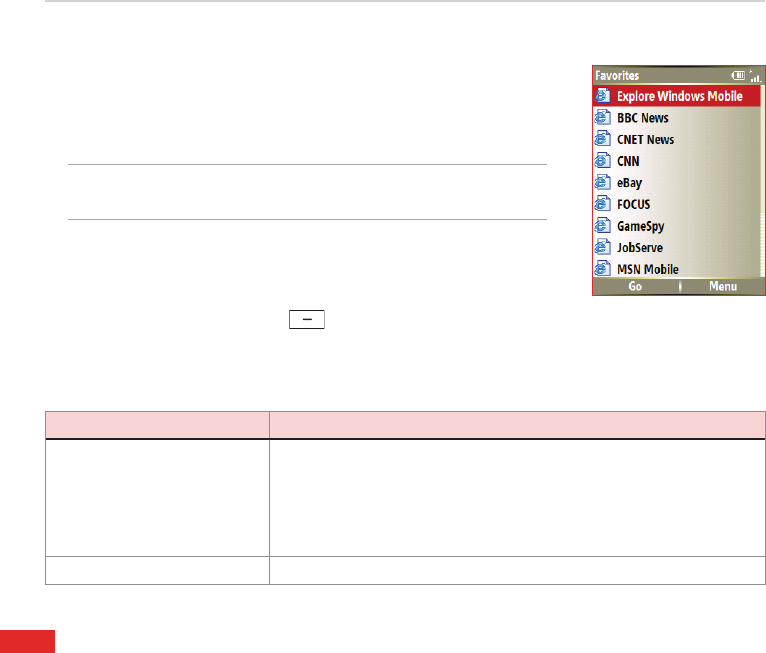
Chapter 6
54
6-4 Using Internet Explorer Mobile
You can use Internet Explorer Mobile to browse mobile favorites and
channels that have been downloaded to your device without connecting
to the Internet. You can also connect to the Internet through an ISP or a
network connection to browse the Web.
NOTE Make sure that you have set up your Smartphone’s
connection (see 6-1 Connecting to the Internet).
Opening Internet Explorer Mobile
To open Internet Explorer
On the Home screen, press Start > Media > Internet Explorer.
With Internet Explorer Mobile, the Favorites list is displayed as the main screen instead of a home page, so
you can easily go to your favorite Web sites. You can add Web sites that you visit frequently to this list.
TO DO THIS
Change connection options 1. Press Menu > Tools > Options > Connections.
2. Do one of the following:
• To allow Internet Explorer to select network settings, select
Automatically detect settings.
• To manually choose network settings, in Select network, select the
network to which Internet Explorer should connect.
View your Favorites list From any Web page, press Favorites.

55
Getting Connected
TO DO THIS
Go to a Web page In Internet Explorer, press Address Bar. Enter the Web page address and
press Go.
Go to a Web page in the History
list
Press Menu > History. Select a Web page, and click Go.
Clear history, cookies, or
temporary les
Press Menu > Tools > Options > Memory.
Add a Web page to the
Favorites list
From the Web page that you want to add, press Menu > Add to Favorites.
Change the size of text on Web
pages
Press Menu > Zoom and select the size you want.
Show or hide pictures on Web
pages
Press Menu > View > Show Pictures. A check mark next to Show
Pictures indicates that pictures will be displayed on Web pages.
View a page in full screen mode Press Menu > View > Full Screen.
Exit full screen mode Press one of the soft keys, and then press Menu > View > Full Screen to
cancel the selection.
Change Web page display
options
Press Menu > View. Select one of the display options.
Create a new folder in Favorites Press Favorites > Menu > Add Folder.
Move a favorite to a folder Press Favorites. Select the favorite to move. Press Menu > Edit. Under
Folder, scroll to the folder to which you want to move the favorite and
press Done.
Send a link via e-mail Go to the Web page you want to send and press Menu > Tools > Send
Link via E-mail. Select Text Messages or Outlook E-mail.

Chapter 6
56
6-5 Using Bluetooth®
Bluetooth is a short-range wireless communications technology that allows you to communicate with
other devices, such as headsets, printers, PCs, GPS receivers, and other users’ mobile devices. Devices
with Bluetooth capabilities can exchange information without requiring a physical connection. Unlike
infrared, you do not need to line up devices to exchange information through Bluetooth. The devices
only need to be within a range of about 10 meters (30 feet) in an open space environment. You can
even beam information to a device in a different room, as long as it is within the specied range.
Setting the Bluetooth mode
By default Bluetooth is turned off. If you turn it on, and then turn off your phone, Bluetooth also turns
off. When you turn on your phone again, Bluetooth turns on automatically.
To set the Bluetooth mode
1. On the Home screen, press Start > Settings > Connections > Bluetooth.
2. Select On, Off, or Discoverable, and press Done .
NOTE You can also turn Bluetooth on and off by pressing and quickly releasing Power
to access the Quick List and selecting Wireless Manager. Select Bluetooth >
Menu > Bluetooth Settings to set Bluetooth mode or select Bluetooth
and press Action to quickly toggle Bluetooth on and off.
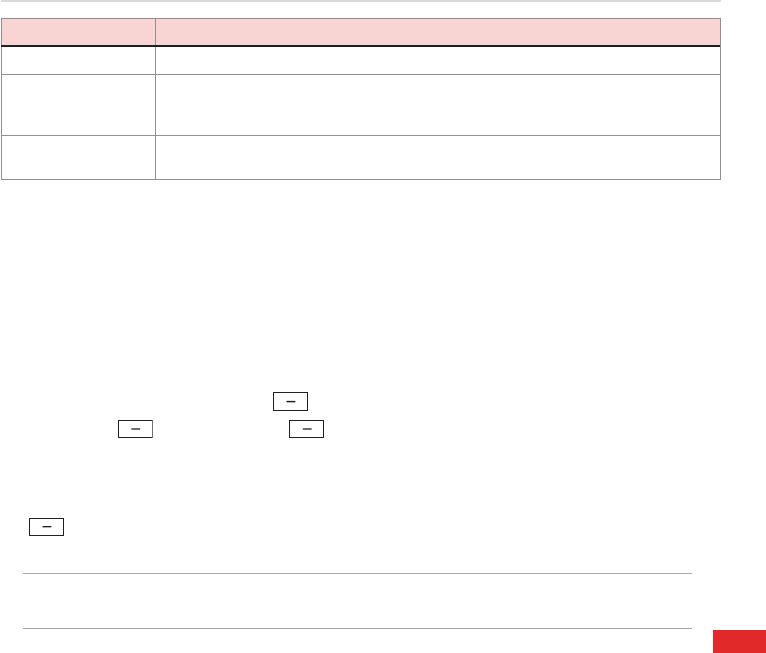
57
Getting Connected
BLUETOOTH MODE DESCRIPTION
On The Bluetooth radio is turned on and you can use Bluetooth features.
Off The Bluetooth radio is turned off. You might want to turn the radio off at times to
conserve battery power, or in situations where radio use is prohibited, like on airplanes
and in hospitals.
Discoverable The Bluetooth radio is turned on, and other Bluetooth devices within range (about 10
meters) can detect your phone.
Creating a Bluetooth partnership
Before your phone can communicate with another device, you need to create a partnership between
your phone and the other Bluetooth-enabled device. Your phone can create partnerships with up to
10 other Bluetooth devices.
To create a Bluetooth partnership
1. Ensure that the two devices are within close range and that both Bluetooth-enabled devices are
discoverable.
2. On the Home screen, press Start > Settings > Connections > Bluetooth.
3. Press Menu > Devices > Menu > New. Your phone searches for other Bluetooth-enabled
devices and displays them in the list.
4. Select the device with which you want to create a Bluetooth partnership, and press Add.
5. Enter a enter a personal identication number (PIN) between 1 and 16 characters, and press Done
.
6. Enter the same PIN on the other device.
NOTE Once you create a partnership, the devices don’t need to be discoverable to beam
information between them; Bluetooth needs only to be turned on.

Chapter 6
58
Pairing with a Bluetooth headset
1. On the Home screen, press Start > Settings > Connections > Bluetooth and set Bluetooth
on your phone to Discoverable.
2. Turn on your Bluetooth headset and bring it to within 30 meters of your Smartphone.
3. Put your Bluetooth headset into pairing mode. Refer to your Bluetooth headset’s user manual for
instructions.
4. On your phone, press Menu > Devices > Menu > New.
5. Select the Bluetooth headset on the Add Devices list and press Next.
6. Enter the passkey provided in the headset user manual. The phone will now pair with the
headset.
7. Set the Bluetooth mode on your phone to On and you are ready to talk hands free.
Listening to streaming audio with a Bluetooth headset
1. Make sure that your phone is paired with a Bluetooth headset by following the instructions in “Pairing
with a Bluetooth headset.”
2. On the Home screen, press Start >Settings>Connections>BluetoothProles>Audio
and select a Bluetooth headset in Default headset.
3. Select the Stream audio to headset check box and press Done.
NOTE Select the Automute checkbox if you want to enable audio streaming to the
Bluetooth headset only and clear it if you want to enable audio streaming to both
the phone speaker and the Bluetooth headset.
4. Open Windows Media Player and start playing music.

59
Your Smartphone is capable of composing, sending, and receiving Outlook e-mail, Internet e-mail,
Multimedia Messaging Service (MMS) messages, and text messages.
7-1 Entering text and numbers
You can enter text and numbers by using the keypad. The phone supports three input modes for entering
text and numbers: Multipress, T9, and Numeric. Multipress and T9 modes are used for entering text,
and Numeric mode is used for entering numbers. When you select a eld that requires text or numbers,
the phone automatically selects the appropriate input mode. The status indicator on the top right side
of the display screen shows the input mode that is currently active.
To change the input mode
1. Press and hold * .
2. Select the input mode and press Action .
The status indicator for the selected input
mode appears at the top right corner of the
screen.
Chapter 7 Messaging
INDICATOR INPUT MODE
Multipress text input mode, lowercase
Multipress text input mode, smart case
Multipress text input mode, caps lock
T9 text input mode, lowercase
T9 text input mode, smart case
T9 text input mode, caps lock
Numeric input mode

Chapter 7
60
Using Multipress mode
Multipress mode allows you to enter text by pressing the assigned key once, twice quickly, or so until
your desired character appears. For example, to enter the letters P, Q, R, or S, you use the 7 key .
Press once for P, twice for Q, three times for R, and four times for S. The letter entered most recently is
underlined until you have completed the keypresses for the letter and moved on to the next letter.
In Multipress mode, you can lock in a letter in several ways: press the Right navigation key, press the
space key , or pause and enter the next letter.
To Change the Multipress time out
On the Home screen, press Start > Settings > More > Accessibility. In Multipress time
out, select the length of the pause between key presses.
Using T9 mode
To form a word in T9 mode, press the numeric keys that contain the letters you want. As you enter
letters, T9 analyzes your keypresses and attempts to complete the word. For example, to enter the
word “today”, press 8 , 6 , 3 , 2 , 9 .
To enter text in T9 mode
1. Press and hold * and select T9. The T9 indicator appears at the top of the screen.
2. Enter letters by pressing the keys on which the letters appear. Press a key only once for each
letter. If there is more than one choice in the T9 dictionary for your entry, a list of available words
is displayed.

61
Messaging
NOTE Press # to enter a space after the word as entered, or select one of the
available words, and the space is added automatically.
If you do not see the desired word, select Add Word? from the list, and press
Action . Press Done to add the word to your text and save it in the phone´s
dictionary, or Cancel to add the word to your text without saving it.
Using Numeric mode
To enter numbers, use Numeric mode. If you need to enter a number within a line of text, change to
Numeric mode to enter the number, and then change back to Multipress or T9 mode to nish entering
the text.
1. If necessary, change to Numeric mode by pressing and holding * .
2. Enter the number or numbers you want using the keypad.
3. Change back to Multipress or T9 input mode by pressing and holding * , and then nish entering
your text.
NOTE If a eld permits a numeric entry only, such as a phone number, the input mode
automatically defaults to Numeric mode.

Chapter 7
62
TO DO THIS
Change between uppercase,
lowercase, and caps lock
Press the * key within a text input mode. The status indicator for the
selected mode appears at the top right corner of the screen.
Enter a space In Multipress or T9 mode, press the # key.
Enter punctuation in Multipress
mode
Press 1 repeatedly until you see the punctuation mark that you want.
To see all of the available symbols, press and hold the # key.
Enter punctuation in T9 mode Press 1, and select from a list of common punctuation.
Enter a symbol Press and hold the * key. Select Symbols to display the Symbol
screen. Select the symbol you want and press Action.
Enter the plus sign for international
calls
In a numeric entry eld, press and hold the 0 key
Start a new line In a multi-line text box such as the Notes area of a contact or a
calendar appointment, press Action. This works in any input mode.
Backspace and delete a single
character in any input mode.
Press the Back key.
Backspace and delete an entire text
or numeric eld in any input mode.
Press and hold the Back key.

63
Messaging
7-2 Setting up accounts-2 Setting up accounts
With <Vodafone Business Email> your e-mails are delivered to your phone automatically, so your inbox
is always up to date. You can access your existing email accounts (POP3 or IMAP4) and corporate email
(Exchange or Lotus server). In case you want to access corporate e-mail, your company IT department
is likely to be handling the set up process. We suggest you contact them with any related queries.
Setting up email accounts
Before sending and receiving emails, you need to set up an email account. If you signed up to <Vodafone
Business Email> service please follow the instructions below to set up the service now. If you have not
signed up for <Vodafone Business Email> but would now like to, please contact Vodafone customer
service at <0123456789>.
To set up an <Vodafone Business Email> account
1. On the home screen, press Start > <Vodafone Email>.
2. Press Install.
3. Follow the instructions on the screen to install and activate <Vodafone Business Email>. For help
and further instructions please see the <Quick Start Guide>.
NOTE Alternatively you can set up an Outlook e-mail account where you have to actively
retrieve your email (POP3 or IMAP4).

Chapter 7
64
To set up an Outlook email account
1. On the home screen, press Start > Messaging > Outlook E-mail.
2. Press Menu > Options > New Account.
3. In Your Name, enter your display name for this account, and in E-mail address, enter the email
address for this account.
4. Select Attempt to obtain e-mail settings from the Internet. Automatic setup attempts to download
necessary e-mail server settings so that you do not need to enter them manually.
5. Press Next .
NOTE If Automatic setup is successful, your user name is already entered. From
there, simply press Next and then Finish to complete setting up
your account, or you can press Options to access additional settings.
If Automatic setup is unsuccessful or you have an account you access using a VPN
server connection, you will need to contact your ISP (Internet Service Provider) or
network administrator to obtain information for entering settings manually.

65
Messaging
7-3 Managing accounts
TO DO THIS
View a list of accounts On the Home screen, press Start > Messaging. A list of accounts is
displayed with the number of unread messages in the Inbox of each account
shown in parenthesis.
Send/receive Internet e-mail
messages
On the Home screen, press Start > Messaging. Select the Internet e-mail
account for which you want to send and receive messages and press Menu >
Send/Receive. To stop this process, press Menu > Stop Send/Receive.
Mark a folder for
synchronization
On the Home screen, press Start > Messaging > Outlook E-mail. Press
Menu > Folders > Menu > Manage Folders. Select a folder to synchronize
and press Sync. The next time you synchronize, the folder(s) that you
marked on your Smartphone are synchronized with the corresponding folders
in Outlook on your PC.
Delete an account On the Home screen, press Start > Messaging. Select an account and press
Select. Press Menu > Options > Account Options and then select the
account you want to delete. Press Menu > Delete.
Switch between accounts With an account open, press Menu > Switch Accounts or use the Left/Right
navigation keys to quickly switch to another account.
Changing account options On the Home screen, press Start > Messaging. Select an account and press
Select. Press Menu > Options and then select the type of option you want to
change. Select Done to conrm.

Chapter 7
66
7-4 Text and e-mail messages
To compose and send a text or e-mail message
1. On the Home screen, press Start > Messaging.
2. Select Text Messages or an e-mail account and press Action or Select .
3. Press New .
4. In To, enter the mobile phone number or e-mail address of the person to which you want to send
the message or press Action to select the person from your contacts.
NOTE If you are sending a message to more than one recipient, separate them with a
semicolon (;).
You can only send text messages to contacts with a mobile phone number.
5. Press the Down navigation key, and enter your message.
6. When nished, press Send .
NOTE If you are working ofine, e-mail messages are saved to the Outbox folder and
sent the next time you connect.
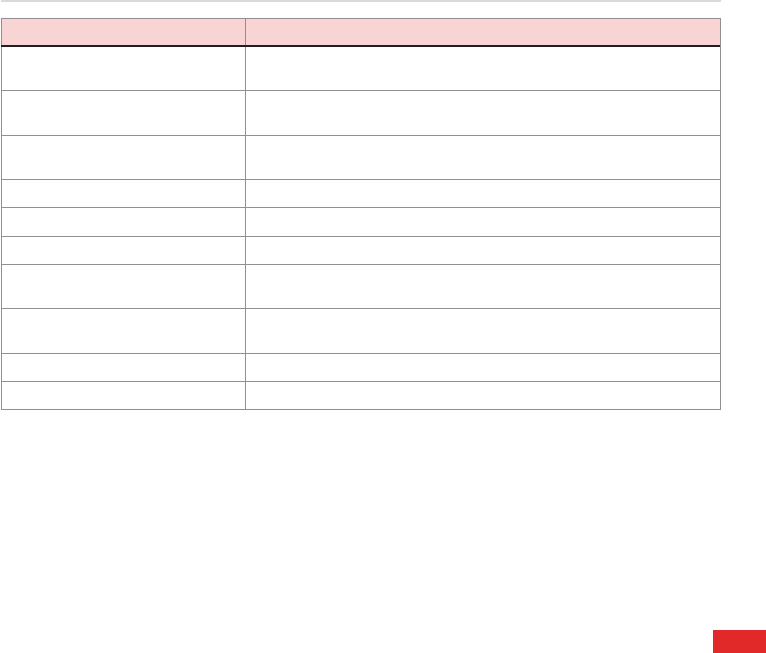
67
Messaging
TO DO THIS
Insert a picture into an e-mail
message
While composing your message, press Menu > Insert > Picture.
Insert a voice recording into an
e-mail message
While composing your message, press Menu > Insert > Voice Note.
Set the priority, security, and
language of an e-mail message
While composing your message, press Menu > Message Options.
Cancel a message While composing your message, press Menu > Cancel Message.
Save a message While composing your message, press Menu > Save to Drafts.
Delete a message With the message you want to delete selected, press Menu > Delete.
Move a message to another folder With the message you want to move selected, press Menu > Move.
Scroll to the new folder and press Select.
Sort messages On any account screen, press Menu > Options > Display. In Sort
Messages by, select your desired sort method.
Insert a signature On any account screen, press Menu > Options > Signatures.
Change message options On any account screen, press Menu > Options.
Downloading e-mail messages
Use Messaging to send and receive e-mail messages in one of two ways:
• Synchronize e-mail messages with Microsoft Exchange or Microsoft Outlook on your PC
• Send and receive e-mail messages by connecting directly to an e-mail server through an Internet
Service Provider (ISP) or a network

Chapter 7
68
Synchronizing e-mail messages
You can e-mail messages as part of the general synchronization process. You will need to enable
mail synchronization in ActiveSync. For more information on enabling mail synchronization, see the
ActiveSync online help on your PC.
NOTE To connect directly to an e-mail server, see 4-6 Synchronizing with an Exchange
Server.
Managing folders
Each Messaging account has a set of ve folders: Deleted Items, Drafts, Inbox, Outbox, and Sent
Items. These folders store messages that you send and receive through the account. You can move
a message to a different folder within the same account.
TO DO THIS
View message folder contents On the Home screen, press Start > Messaging. Select the account that
you want to view. Press Menu > Folders and select the folder that you
want to view.
Moving a message to a different
folder
On the Home screen, press Start > Messaging. Select the account
with the message that you want to move. Scroll to the message you
want to move and press Menu > Move. Select the folder into which to
move the message.
Empty the Deleted Items folder On the Home screen, press Start > Messaging. Select the account
with the Deleted Items folder that you want to empty. Select Deleted
Items and press Select. Press Menu > Empty Folder.
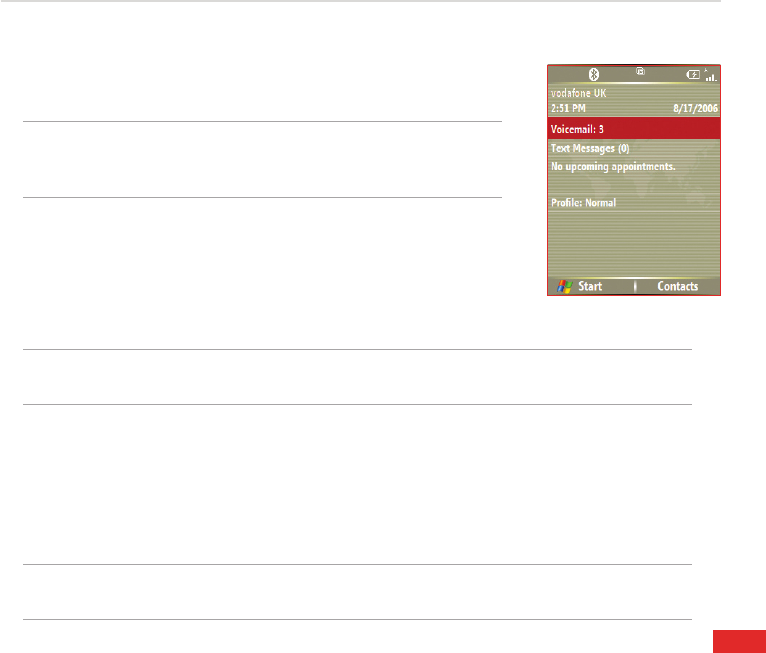
69
Messaging
7-5 VoiceMail Messages
Calls are diverted to a VoiceMail when you are not available or your phone
is powered off.
NOTE This function is only available if your operator supports it, and
this service may need to be acquired separately. Contact your
mobile phone line operator for more information.
Receiving VoiceMailnotications
Your mobile phone line operator will update the VoiceMail counter if there
are new VoiceMails pending.
NOTE The VoiceMail counter is controlled by the mobile phone line operator, and thus may not
be incremented immediately or accordingly to your VoiceMail messages pending.
Listening to VoiceMails
You can listen to VoiceMails in any of the following ways:
1) Clicking on the VoiceMail line on the main screen or;
2) Dialing the VoiceMail number (provided by your mobile phone line operator).
NOTE Once you connect to the VoiceMail server, the VoiceMail counter will be reset to 0,
regardless of how many VoiceMails are available or you have listened to.

Chapter 7
70
7-6 MMS messaging
MMS (Multimedia Messaging System) allows you to send text messages with multiple slides. Included
on each slide can be a picture, video or audio, and/or text. MMS messages are sent by GPRS (General
Packet Radio Service) to e-mail accounts or other MMS-enabled mobile devices.
NOTE You need to subscribe to the GPRS and MMS services with your service provider
before you can send and receive MMS messages. Ask your phone operator on
how to activate the MMS feature. Only mobile phones with MMS feature can
send/receive MMS messages.
Depending on the service that you subscribe to, you may not be able to send and
receive MMS messages to users using a different mobile phone network.
Accessing MMS
Do one of the following:
• On the Home screen, press Start > Messaging > MMS.
• After capturing a picture or video clip, press Menu > Send > MMS.
Editing MMS settings
On the MMS main screen, press Menu > Options > Account Options > MMS to open the
Preferences screen and edit MMS settings. Select or clear check boxes according to your needs.
On the MMS main screen, press Menu > MMS Settings > MMSC Settings, and select your
Internet Service Provider from the list. Press Menu > Edit to access Multimedia Messaging Service
Center (MMSC) settings. You should contact your mobile service operator for detail settings.

71
Messaging
Composing and sending an MMS message
To compose and send an MMS message
1. On the Home screen, press Start > Messaging > MMS > New.
2. In the To: eld, enter the mobile phone number or e-mail of your recipient. You can enter it using
the keypad or press Menu > Add Recipient to select from your Contacts. If you have more
than one recipient, separate them with semicolons.
3. In the Subject eld, enter a subject for the message.
4. Select the Insert Picture/Video box and press Action . All of your pictures and video clips will be
displayed in thumbnail view.
5. Select a picture or video clip and press Action or Select .
6. Select the Insert Audio box and press Action . All of your available audio clips will be displayed
in thumbnail view.
7. Select the audio clip you want to attach, then press Action or Select .
NOTE You will not be able to attach an audio le to a slide with a video clip.
8. Press the Down navigation key to scroll down to the text eld and enter your message.
9. Press Send to send the message.

Chapter 7
72
The following assumes that you are on the MMS message screen.
TO DO THIS
Copy the message to other
recipients
Use the Up/Down navigation keys to scroll up to display the Cc eld.
Enter the recipient‘s phone number or e-mail address or press Action
to select a recipient from your Contacts list.
Hide a recipient’s contact
information from other message
recipients
Use the Up/Down navigation keys to scroll up to display the Bcc eld.
Enter the recipient‘s phone number or e-mail address or press Action
to select a recipient from your Contacts list.
Hide sender information Press Menu > MMS Settings > Send Options. Select the Hide
Sender check box.
Go to the next slide Press the Right navigation key.
Go to the previous slide Press the Left navigation key.
Create an MMS message from a
template
Press Menu > Template > Gallery to compose a message using a
predened template.
Create an MMS message template Create a message or open an existing message, and press Menu >
Template > Save.
Add preset or frequently used text
strings to a message
In a text eld, press Menu > Insert > My Text. Select the text string
that you want to add and press Action or Insert.
Create or edit a preset message
before adding it to the message
body
In a text eld, press Menu > Insert > My Text to open the My Text
screen. Press Menu > Add My Text or Menu > Edit My Text.
Request message delivery
notication
Press Menu > MMS Settings > Send Options. Select the Delivery
Report check box.

73
Messaging
7-7 Using Pocket MSN
Pocket MSN on your device is an instant messaging program that allows you to do the following:
• See who among your contacts is online and chat with them by sending and receiving instant
messages.
• Access your hotmail account, if you have one, and send and receive emails.
To use Pocket MSN, you must have a Passport to use the MSN Messenger Service. If you have a
Hotmail® or MSN account, you already have a Passport. Once you have obtained either a Microsoft
Passport or Microsoft Exchange account, you are ready to set up your account.
Sign up for a Microsoft Passport account at http://www.passport.com.
Get a free Microsoft Hotmail e-mail address at http://www.hotmail.com.
Using MSN Messenger
To sign in and out of MSN Messenger
1. On the Home screen, press Start > More > Pocket MSN > MSN Messenger.
3. On the MSN Messenger main screen, press Sign In .
4. Enter the e-mail address and password for your Passport or Hotmail account.
5. Select Save password if you don’t want to enter your password again in the future and press Sign
In .
6. To sign out, press Menu and then select Sign Out.
NOTE If you do not sign out of MSN Messenger, you will remain connected. This may
result in additional charges from your service provider.

Chapter 7
74
TO DO THIS
Add a contact Press Menu > Add Contact, and follow the instructions on the screen.
Delete a contact Select the contact to delete and press Menu > Delete Contact.
Send an instant message Select the contact with whom you want to chat and press Menu > Send
Message. Enter your message and press Send.
Quickly add common phrases Press Menu > My Text and select a phrase from the list.
Reply to an instant message Press Menu > Chats and select the name of the person sending the instant
message. The message displays, along with a box for your reply. Enter
your reply and select Send.
Add other people to a
conversation
From a chat session, press Menu > Invite, and then select a contact.
Receive instant messages
at any time your phone is
connected to a network,
Press Menu > Options > Passport Account > Run this program when
connection is available > Done.
Switch to another chat session Press Menu > Chats. In the list of ongoing chats, select the name of a
contact with whom to chat.
Return to the contacts list From a chat session, press Menu > My Contacts.
End a chat session From a chat session, press Menu > End Chat.
See all who are chatting Press Menu > Chats.
Block someone on your MSN
Messenger contacts list from
seeing and contacting you
In the MSN Messenger contacts list, select the contact’s name. Press
Menu > Block. The contact will no longer be able to see your status or
send you messages.
Unblock a contact In the MSN Messenger contacts list, select the contact’s name. Press
Menu > Unblock.
Change your status In the MSN Messenger contacts list, select your name. Select a status
description and press Action.
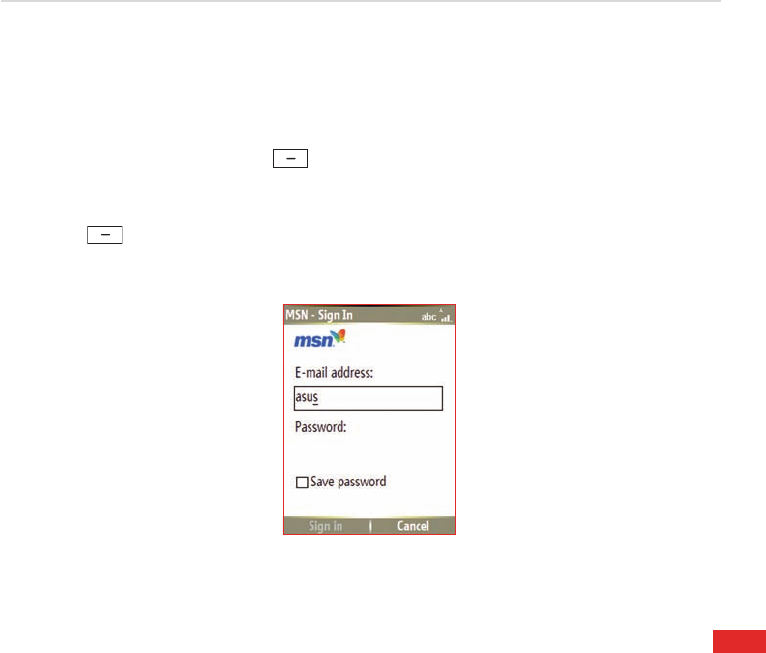
75
Messaging
Using MSN Hotmail
With MSN Hotmail, you can access your hotmail mailbox on your Smartphone and send and receive
e-mails.
To sign in and out of MSN Hotmail
1. On the Home screen, press Start > Pocket MSN > MSN Hotmail.
2. On the MSN - Sign In screen, enter the e-mail address and password for your Hotmail account.
3. Select Save password if you don’t want to enter your password again in the future and press
Sign In .
4. To sign out, press Menu and then select Sign Out.

76
Chapter 8 Organizing Your Life
8-1 Using Contacts
Contacts maintains a list of your friends and colleagues so that you can easily nd the information
you look for, whether you are at home or on the road. Using the Bluetooth port on the device, you can
quickly share Contacts information with other device users. If you use Outlook on your PC, you can
synchronize Contacts between your phone and PC.
Viewing Contacts
To view the Contacts list, do one of the following:
• On the Home screen, press Start > Contacts.
• On the Home screen, press Contacts .
The contact list displays the names of your contacts alphabetically. Beside each name in the contact list
is an abbreviation for the default communication method, such as the person’s work phone number (w)
or home phone number (h). If the contact information includes a work phone number, your Smartphone
automatically sets it as the default number.
If there are phone numbers stored in your SIM card, the entries will be displayed at the end of the list,
with a SIM card icon following the name.

77
Organizing Your Life
TO DO THIS
Create a new contact On the Home screen, press Start > Contacts > New. Enter information for the new
contact and press Done.
Create a new contact
on the SIM card
On the Home screen, press Start > Contacts. Press Menu > New SIM Contact.
NOTE: You can only store one phone number for a SIM contact.
Edit a contact’s
information
On the Home screen, press Start > Contacts. Select the contact whose information
you want to edit and press Action. Press Menu > Edit. When nished making
changes, press Done.
Call a contact from
the contact list
On the Home screen, press Start > Contacts. Select the contact to call and press
Send. To call a phone number other than the default, select the contact, use the Left/
Right navigation keys to scroll to the number you want to call, and press Send.
Send a text message
to a contact
On the Home screen, press Start > Contacts. Select the contact to which you want to
send a text message and press Action. Scroll to Send Text Message.
Send an e-mail to a
contact
On the Home screen, press Start > Contacts. Select the contact to which you want to
email and press Action. Scroll to Send e-mail and press E-mail > Outlook E-mail.
Send an MMS
message to a contact
On the Home screen, press Start > Contacts. Select the contact to which you want to
send an MMS message and press Menu > Send MMS.
Beam a contact’s
information to
another device
On the Home screen, press Start > Contacts. Select the contact to beam and press
Menu > Beam Contact. Select the device and press Beam.
Find a contact by
name
On the Home screen, press Start > Contacts. If you are not in Name view, press
Menu > View By > Name. Enter the rst few letters of the contact’s name or the rst
few digits of the phone number until the contact is displayed.
Find a contact by
company
On the Home screen, press Start > Contacts. Press Menu > View By > Company.
Select the company that your contact works at and press Action to see all the
contacts who work there.
Find a contact using
lter
From the Contact list, press Menu > Filter. Select the category that you have
assigned to the contact. To show all contacts again, select All Contacts.

Chapter 8
78
TO DO THIS
Assign a ring tone to
a contact
On the Home screen, press Start > Contacts. Select the contact to which you want to
assign a custom ring tone and press Action. Press Menu > Edit and scroll to Custom
ring tone. Use the Left/Right navigation keys to select a ring tone and press Done.
Add a pictures to a
contact
On the Home screen, press Start > Contacts. Select the contact to which you want
to add a picture and press Action. Press Menu > Edit and scroll to Picture and press
Action. Select an already existing picture and press Select or select Camera and
take a picture to use.
Managing your SIM contacts
All your contacts that are stored on your SIM card are listed in the SIM Manager. You can save all the
contacts on your SIM card to your Smartphone using your SIM Manager.
Accessing SIM Manager
On the Home screen, press Start > More > Tools > SIM Manager.
TO DO THIS
View a SIM contact’s information In SIM Manager, select the contact that you want to view and press
Action.
Copy a SIM contact to your phone In SIM Manager, press Menu > Copy to Contact and then press OK
to conrm.
Copy all SIM contacts to your phone In SIM Manager, press Menu > Select All to select all the contacts on
your SIM card. Press Menu > Copy to Contact and then press OK to
conrm.
Delete a SIM contact from your SIM
card
In SIM Manager, press Menu > Delete and then press OK to conrm.
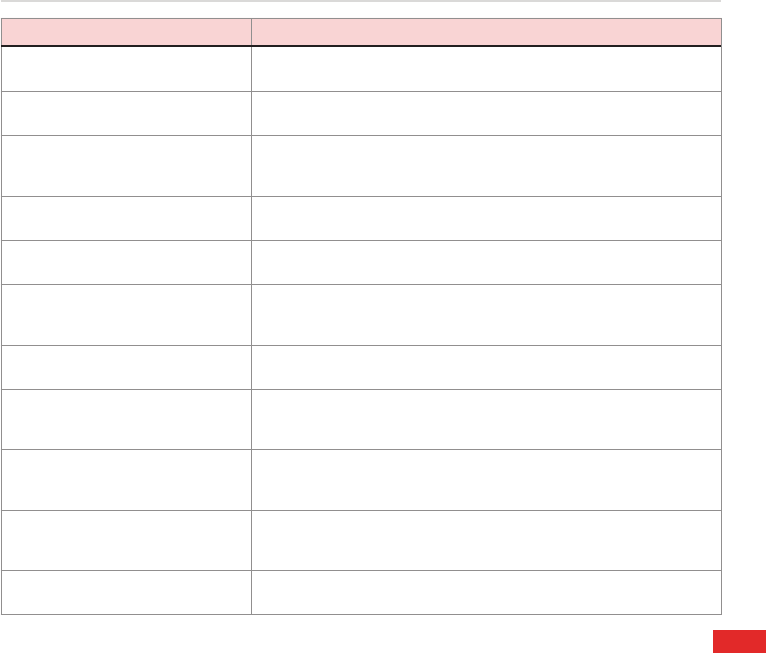
79
Organizing Your Life
TO DO THIS
Delete all SIM contacts from your
SIM card
In SIM Manager, press Menu > Select All to select all the contacts on
your SIM card. Press Menu > Delete and then press OK to conrm.
Edit a SIM contact’s name and/or
phone number
In SIM Manager, select the contact that you want to edit and press
Menu > Edit.
Copy a contact from your phone to
your SIM card
In SIM Manager, press Menu > Copy Contact to SIM. Select the
contact you want to copy from your phone memory to your SIM card
and press Select.
View text messages on your SIM
card
In SIM Manager, press Menu > SMS.
Return to contacts view from Text
messages screen
After you have pressed Menu > SMS, you can return to Contacts by
pressing the Back button.
Delete all text messages on your
SIM card
In SIM Manager, press Menu > SMS > Menu > Select All. All the text
messages on your SIM card are selected. Press Menu > Delete and
then OK to conrm.
Delete a text message on your SIM
card
In SIM Manager, press Menu > SMS. Select the text message to
delete and Press Menu > Delete.
Copy all the text messages from
your SIM card to your phone
In SIM Manager, press Menu > SMS > Menu > Select All. All the text
messages on your SIM card are selected. Press Menu > Copy to Text
Message and then OK to conrm.
Copy a text message from your SIM
card to your phone
In SIM Manager, press Menu > SMS. Select the text message to copy
to your phone, press Menu > Copy to Text Message and then OK to
conrm.
Copy a text message from your
phone to your SIM card
In SIM Manager, press Menu > SMS. Select the text message to copy
to your phone, press Menu > Copy Text Message to SIM and then
OK to conrm.
Access text messages on your
phone from SIM Manager
In SIM Manager, press Menu > Switch Text Message.

Chapter 8
80
8-2 Using Calendar
Use Calendar to schedule appointments, including meetings and other events. Your appointments
for the day can be displayed on the Home screen. You can also set Calendar to remind you of
appointments. If you use Outlook on your PC, you can synchronize appointments between your
phone and PC.
To open the Calendar program, do one of the following:
• On the Home screen, press Start > Calendar.
• On the Home screen, scroll to the upcoming appointment and press Action .
Scheduling an appointment
To schedule an appointment
1. On the Home screen, press Start >
Calendar.
2. Press Menu > New Appointment.
3. Enter information about the appointment.
To schedule an all-day event, in End time,
select All day event.
4. Press Done .
TO DO THIS
Make an
appointment
recurring
Select the appointment and press
Action. Press Edit. Scroll to Occurs
and select one of the recurrence
options.
Delete an
appointment
Select the appointment to delete
and press Menu > Delete
Appointment.
Beam an
appointment
Select the appointment to beam and
press Action. Press Menu > Beam
Appointment.
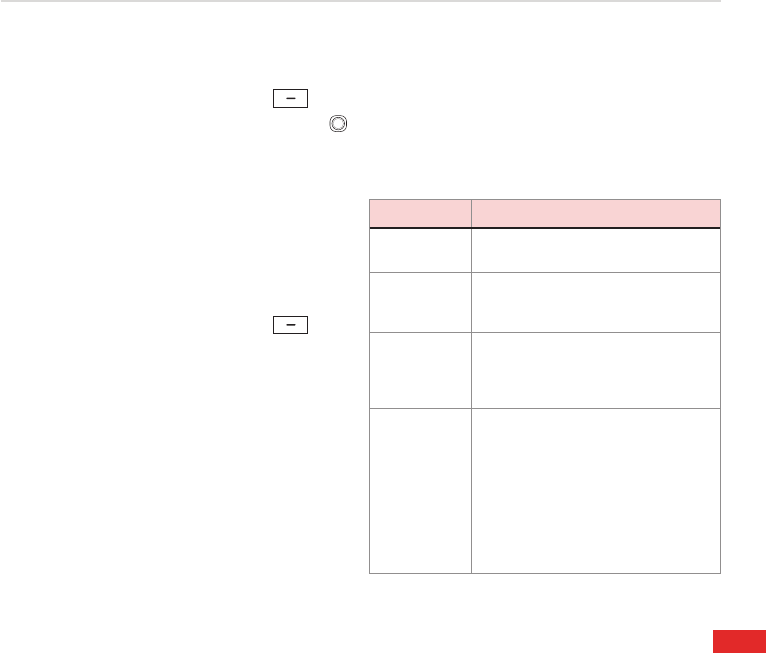
81
Organizing Your Life
Viewing an appointment
To view an appointment
1. On the Home screen, press Start > Calendar.
2. Select the appointment and press Action .
TO DO THIS
View today’s
agenda
From any Calendar view, press
Menu > Go to Today.
View your
agenda for a
specic date
From any Calendar view, press
Menu > Go to Date. Enter the date
to view and press Done.
Show week
numbers
From any Calendar view, press
Menu > Options. Scroll to Month
view and select Show week
numbers.
Change the
display of the
work week
In any Calendar view, press Menu >
Options and do the following:
• To specify the rst day of the
week, in First day of week,
select Sunday or Monday.
• To specify the number of days
you want to appear in a week, in
Week view, select 5-day week,
6-day week, or 7-day week.
Viewing your schedule
You can view your schedule in your calendar in
three different views: Week View, Month View,
and Agenda View.
To view your schedule
1. On the Home screen, press Start >
Calendar.
2. Press Menu and then select your desired
view.
• Week View
• Month View
• Agenda View

Chapter 8
82
8-3 Using Tasks
Use Tasks to keep track of what you have to do.
The Tasks list
The task list is your “things to do” list. When you create or edit tasks with Outlook on your PC and
then synchronize it with your phone, additional information, such as due date, priority, and category,
may show. A task that has been marked as high priority is preceded by an exclamation mark, and
one marked as low priority by a downward-pointing arrow. Overdue tasks are displayed in bold red.
NOTE You can synchronize information on your phone with your PC to keep your task
list up to date in both locations.
TO DO THIS
Create a task On the Home screen, press Start>Ofce>Tasks. Scroll to the Enter
new task here box at the top of the screen, enter the task name, and
press Action.
Mark a task as completed On the Home screen, press Start>Ofce>Tasks. Scroll to the task
to mark complete, then press Complete.
Delete a task On the Home screen, press Start>Ofce>Tasks. Scroll to the task
to delete, then press Menu > Delete Task. Press Yes to conrm.
Change a completed task to
incomplete
On the Home screen, press Start>Ofce>Tasks. Scroll to the
completed task to as incomplete, then press Activate.
Find a task On the Home screen, press Start>Ofce>Tasks. Press Menu
> Sort by and select a sort option or Menu > Filter and select a
category.
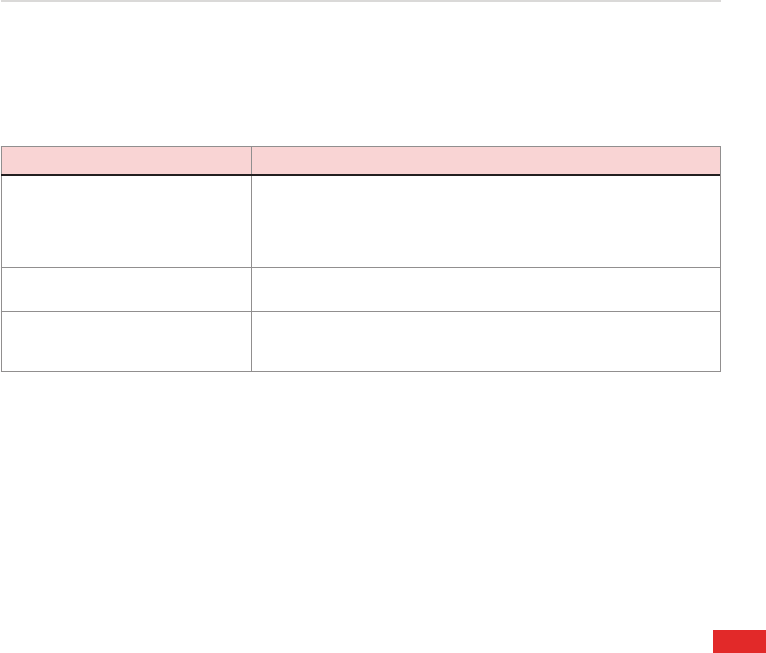
83
Organizing Your Life
8-4 Using Voice Notes
You can use Voice Notes to create and play back short voice recordings and verbal reminders.
Recordings are included in the All Notes list and are named consecutively Recording 1, Recording 2,
and so on.
TO DO THIS
Create a voice note On the Home screen, press Start>Ofce>VoiceNotes. The All
Notes screen is displayed. Hold the phone’s microphone near your
mouth. Press Record to start recording your voice note. A counter
displays the number of seconds elapsed during recording. Press Stop
to stop recording.
Play, rename, or delete a voice note From the All Notes screen, select the voice note and then press Menu
> Play, Menu > Rename, or Menu > Delete.
Set a voice note as a ring tone From the All Notes screen, select the voice note to use as your current
ring tone and then press Menu > Set As Ringtone. Press OK to
conrm.
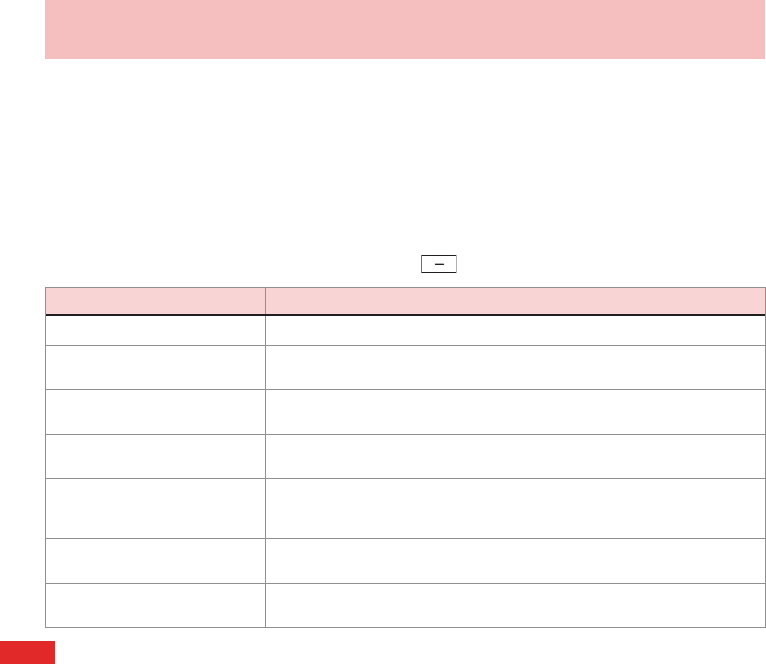
84
Chapter 9 Multimedia
9-1 Working with pictures and videos
Using Pictures & Videos
The Pictures & Videos program allows you to work with pictures video clips on your phone. After you
have taken the pictures and videos, you can organize, edit, beam, as well as send them by using a
messaging program.
To open the Pictures & Videos program, press Start > Media > Pictures & Videos.
TO DO THIS
View a picture Select the picture you want to view and press View.
Play a video clip Select the video clip (shown as a Windows Media Player icon) you want to
see, and press Play.
Delete a picture or video clip Select the picture or video clip you want to delete and press Menu >
Delete.
View your pictures as a slide
show
Press Menu > Play Slide Show.
Set a picture as the Home
screen
Select the picture you want to use as the Home screen and press View >
Menu > Use as Home Screen. Use the Left/Right navigation keys to select
the display area and press Next . Adjust the transparency and press Finish.
Beam a picture or video clip Select the picture or video clip you want to beam and press Menu > Beam.
Select the device to which you want to send and press Beam.
Change de name of a picture Select a picture and press Menu > Save > Save as.... Change the name is
the Name eld.

85
Multimedia
TO DO THIS
Edit a picture Select the picture you want to edit and press View. Press Menu > Edit, and
do the following:
• To rotate the picture 90 degrees, press Menu > Rotate.
• To crop the picture, press Menu > Crop. Use the navigation pad to
position the rst corner of the cropping area and press Next. Position the
second corner and press Finish. To start over, press Previous.
• To automatically readjust the brightness and contrast levels of the
picture, press Menu > Auto Correct.
Press Menu > Save As, to save the edited picture with a different name or
to a different location.
E-mail a picture or video clip
(You must already be set up to
send and receive messages
- see 7-2 Setting up accounts)
Select the picture or video clip you want to send and press Menu > Send.
Select Outlook E-mail and press Select. A new e-mail message is created
with the le attached. Enter the recipient’s e-mail address, the subject, and
your message; and press Send.
Send a picture or video clip
using MMS
Select the picture or video clip you want to send and press Menu > Send.
Select MMS and press Select. A new MMS message is created with the le
attached. Enter the recipient’s mobile phone number and the subject. Scroll
down to Insert Audio (available only for pictures), press Action, and select
an audio clip to attach. Scroll down to Insert Text, enter your message; and
press Send.
Set a picture size to use when
e-mailing pictures
Press Menu > Options > General. Select the rst scroll box and use the
Left/Right navigation keys to select the picture size.
Set whether pictures are
rotated clockwise or counter-
clockwise.
Press Menu > Options > General. Select the second scroll box and use
the Left/Right navigation keys to select Right (clockwise) or Left (counter-
clockwise).
Set the screensaver to play
when the phone is connect to a
PC for more than 2 minutes
Press Menu > Options > Slideshow. Select the second scroll box and use
the Left/Right navigation keys to select Right (clockwise) or Left (counter-
clockwise).

Chapter 9
86
9-2 Listening to music and watching videos
Use Microsoft® Windows Media™ Player Mobile for Smartphone to play digital audio and video les
that are stored on your phone or on the Web. You can listen to media les through the speaker on the
back of your smartphone or through a stereo headset.
Windows Media Player Mobile can play the following types of les:
• Windows Media Audio (WMA)
• Windows Media Video (WMV)
• Motion Picture Experts Group-2 Audio Layer-3 (MP3)
• Third generation video standard H.263 baseline (3GP)
Use Microsoft Windows Media Player on your PC to copy digital audio and video to your phone.
Windows Media Player screens
Playback screen
The default screen that displays the playback controls (such as Play, Pause, Next, Previous, and Volume)
and the video window. You can change the appearance of this screen by choosing a different skin.
Now Playing screen
The screen that displays the Now Playing playlist. This special playlist indicates the currently playing
le and any les that are queued up to play next.
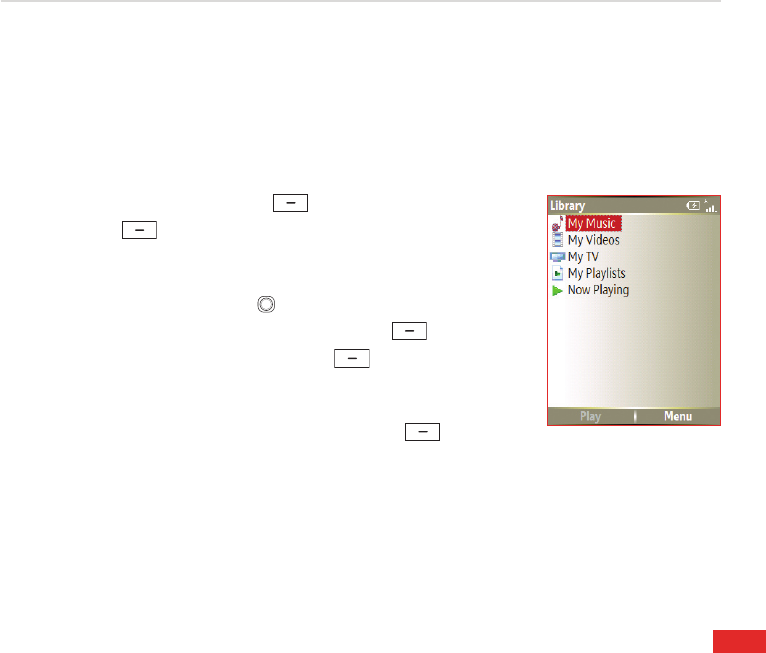
87
Multimedia
Library screen
The screen that lets you quickly nd your audio les, video les, and playlists. It contains categories
such as My Music, My Videos, My TV, and My Playlists.
Playingmediales
Toplayamediale
1. On the Home screen, press Start > Media > Windows Media.
2. Press Menu > Library.
3. Do one of the following:
• To play a le from a library, select the library you want to use in the
Library list and press Action .
• To play a le that is not in a library, press Menu > Open File.
• To play a le from the web, press Menu > Open URL. In URL,
enter the Web address, or select a site you have visited before in
History.
4. Select the le you want to play, and then press Play .
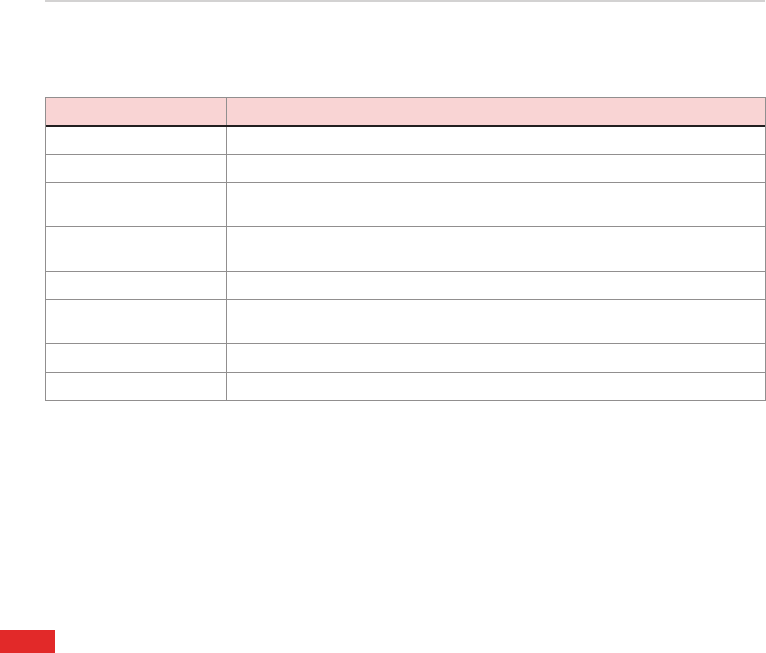
Chapter 9
88
Playback screen options
When playback of an audio or video clip is in progress, the menu contains the following options.
OPTION DESCRIPTION
Library Displays the Library screen so you can choose a le to play.
Play/Pause Play or pause playback of current le.
Stop Stops playback. If playback is started again, it will start from the beginning of the
current le.
Shufe/Repeat Select Shufe to play the items in the Now Playing playlist in random order and
Repeat to play . the items in the Now Playing playlist repeatedly.
Full Screen When a video is playing, it is displayed using the entire screen.
Options Lets you adjust various Media Player options related to playback, video, network,
library, skins, and hardware button assignment
Properties Displays information about the le that is currently playing.
About Displays information about Windows Media Player.
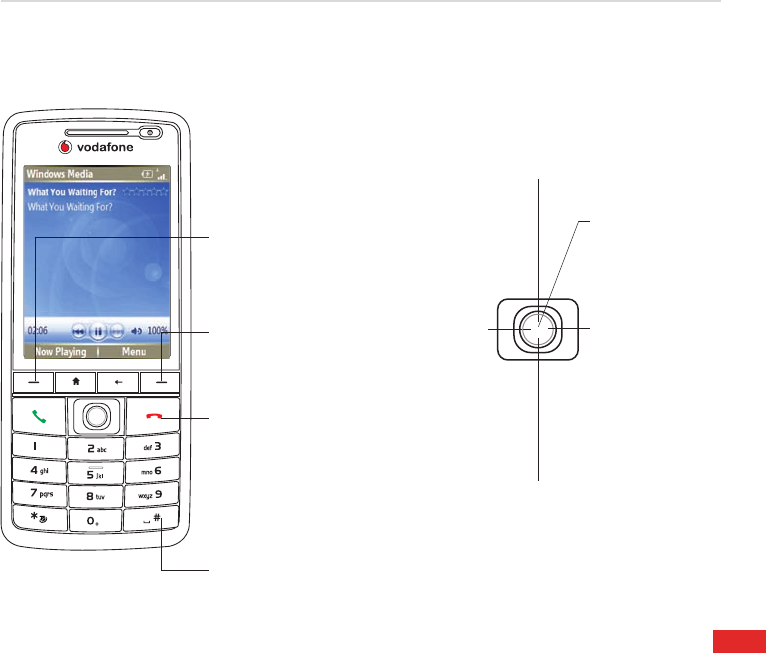
89
Multimedia
Play/Pause
Press to play/pause
the current le
Previous/Rewind
Push left once to go
back to the beginning
of the current clip;
push twice to go to
the previous clip.
Hold to rewind on the
current le.
Volume +
Push up to increase
volume
Volume -
Push down to decrease
volume
Next/Fast Forward
Push once to skip to
the next le. Hold to
fast forward on the
current le.
Keypad controls Thumbstick controls
Playback controls
Now Playing
Press to access
information about
the playing le.
Menu
Press to access
playback options
Minimize Windows
Media Player
Press to minimize
Windows Media
Player. Currently
open files will
continue playing in
the background.
Mute
Press to mute/
unmute currently
played le.

Chapter 9
90
9-3 Using Java (MIDlet Manager)
Your phone supports Java 2 Edition, J2ME. The Java MIDlet Manager allows you to download Java
applications, such as games and utilities, that are specically designed for mobile phones and then
easily install and managed them.
To install, run, and manage MIDlet programs (MIDlets) on your phone, you have to rst download
the MIDlets to your device directly from the Internet or from your PC.
Installing Java MIDlets directly from the Internet
To install Java MIDlets directly from the Internet
1. On the Home screen, press Start > More > Tools > Java. The esmertec Java screen
appears.
2. Press Menu > Install > Internet to open Internet Explorer.
3. Locate the MIDlet/MIDlet suite while connected to the Internet.
4. Select the MIDlet/MIDlet suite to download.
5. Press Yes to start installing the MIDlet/MIDlet suite.
6. Press Done to conrm.
Installing Java MIDlets from a PC
You can install the MIDlets/MIDlet suites on your phone from a PC using the USB sync cable, or
Bluetooth. MIDlets copied to your phone using Bluetooth or e-mail attachments are automatically
saved in the My Documents folder.

91
Multimedia
To install Java MIDlets from your PC
1. Download the games and utilities that you want to install on your phone to your PC.
2. Open ActiveSync on your PC and click Explore.
3. Go to the My Device\My Documents or the My Device\Storage Card folder on your
Smartphone and paste the les.
4. On the Home screen of your phone, press Start > More > Tools > Java. The
esmertec Java screen appears.
5. Press Menu > Install > Local. A list of all MIDlets/MIDlet suites available will be shown.
6. Select the MIDlet/MIDlet suite to install and press Install .
7. Press Yes to install.
8. Press Done to conrm.
Running Java MIDlets
To run Java MIDlets
1. On the Home screen, press Start > More > Tools > Java. The phone will display a
list of MIDlets.
2. Select a MIDlet, and then press Action .
TO DO THIS
Uninstall a MIDlet From the Java main screen, select the MIDlet to uninstall and press Menu
> Uninstall.
Update a MIDlet From the Java main screen, select the MIDlet to update and press Menu >
Update.
Change the display name of a
MIDlet
From the Java main screen, select the MIDlet to rename and press Menu
> Edit.
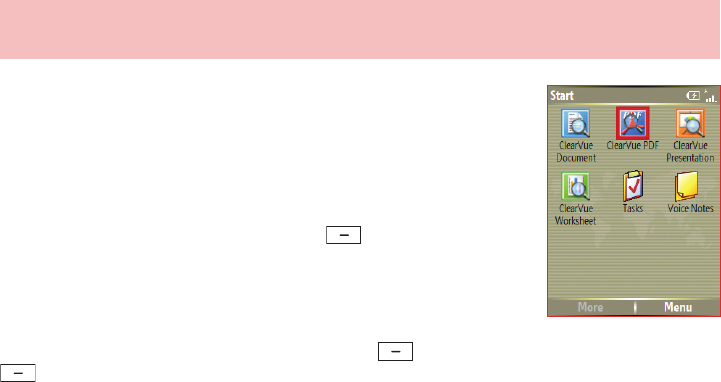
Chapter10 ViewingOfceFiles
Your Smartphone comes with a set of preinstalled applications to visualize
documents, spreadsheets, presentations and .pdf les.
These applications from ClearVue do not work as your normal ofce
applications would, and you will only be able to visualize, zoom, and print
documents, without being able to edit or modify them in any way.
To access this set of applications press Start >Ofce.
10-1 Common Features
Once you access any of the ClearVue applications, you will be welcome
with a similar set of functions. Press the soft left key to access the le menu, and soft right key
to access the zoom menu.
With an open le, you can use the thumbstick to navigate trough it.
File menu
From this menu you can Open a le, quickly access to recent les, and close les. You can also access
to help and vendor´s information.
Zoom menu
Once you open a document, you will be able to zoom in and out. You can select different percentages
according to your needs.
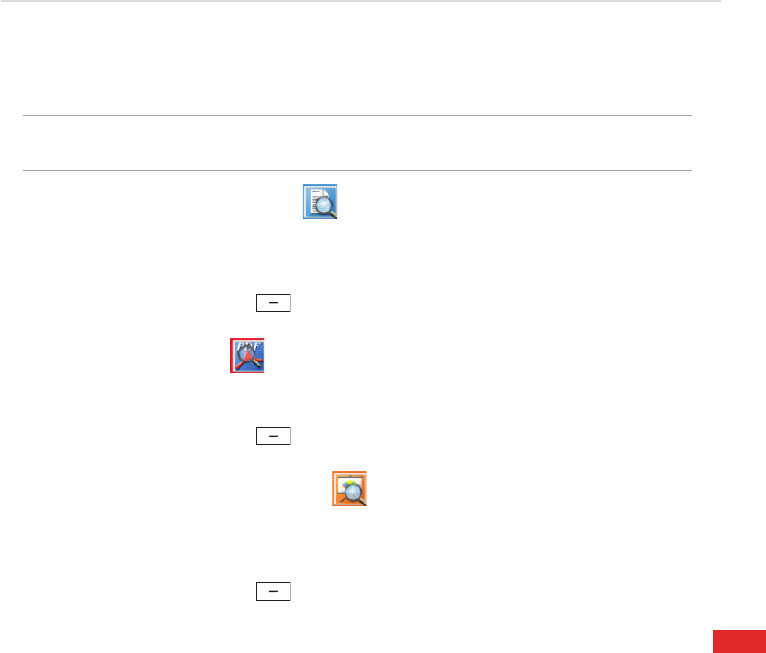
93
ViewingOfceFiles
93
Printing
In order to print directly from the Smartphone, you will need a compatible printer, such as WestTek´s
Jetcet. From the File menu, select Print and select the printing options you want from the dialog.
NOTE The printing menu will only be displayed if the Smartphone detects a compatible
printer installed.
10-2 ClearVue Document
The ClearVue document viewer show documents created in Microsoft Word 97, 2000, 2002 (XP) and
2003. It can also display documents saved in Rich Text Format (.rft).
To start this application press Start >Ofce>ClearVueDocument.
10-3 ClearVue PDF
The ClearVue PDF viewer displays Portable Document Format (.pdf) les.
To start this application press Start >Ofce>ClearVuePDF.
10-4 ClearVue Presentation
The ClearVue presentation viewer displays documents created in Microsoft PowerPoint 97, 2000,
2002 (XP) and 2003.
To start this application press Start >Ofce>ClearVuePDF.
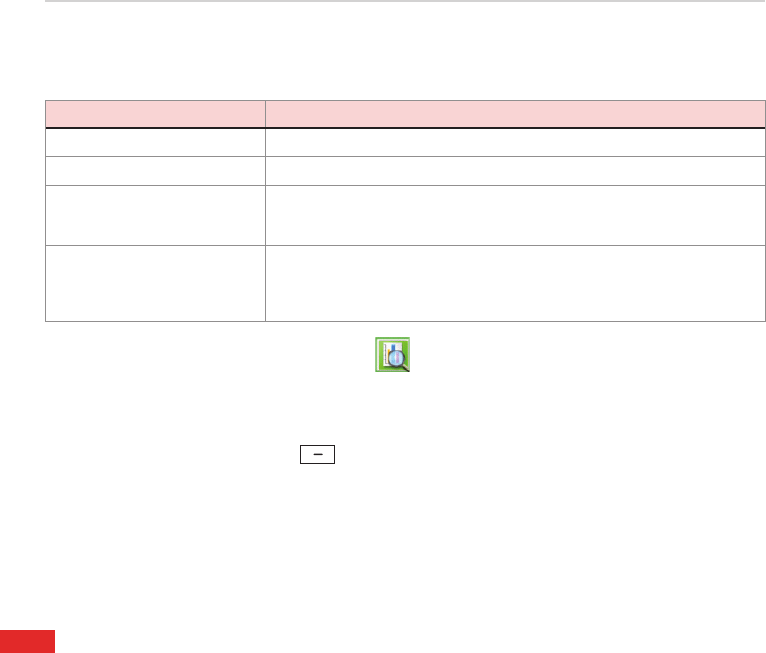
Chapter 10
94
When you open a presentation, the screen will be divided in two, having the current slide on the top part
of the screen and thumbnails of each slide in the bottom part. Use the thumbstick to navigate trough
the thumbnails and display a larger view in the top part of the screen.
TO DO THIS
View a slideshow Press View > View show.
View notes Press View > View notes.
Congure a slideshow Press View > Set up show to modify advance slide timing, enable/disable
continuous looping, and change the viewing orientation. You can also
enable/disable the appearance of a black slide at the end of the show.
Modify the display of slides in a
presentation
Press View > Custom Show. Change the slide in Presentation to modify
the rst slide displayed. Use the soft right key to access a menu of options
to Add, Delete, Hide, change order (using the Move up and Move down
options), or Reset the Show list to its default order.
10-5 ClearVue Worksheet
The ClearVue Worksheet viewer displays documents created in Microsoft Excel 97, 2000, 2002 (XP)
and 2003.
To start this application press Start >Ofce>ClearVueWorksheet.
Navigating trough sheets
Use View > Sheet to access other sheets in the le.

95
Federal Communications Commission Statement
This device complies with Part 15 of the FCC Rules. Operation is subject to the following two conditions:
1) This device may not cause harmful interference, and
2) This device must accept any interference received, including interference that may cause undesired operation.
This device and its antenna must not be co-located or operating in conjunction with any other antenna or transmitter.
This equipment has been tested and found to comply with the limits for a Class B digital device, pursuant to Part 15 of
the FCC Rules. These limits are designed to provide reasonable protection against harmful interference in a residential
installation. This equipment generates, uses and can radiate radio frequency energy and, if not installed and used
in accordance with manufacturer’s instructions, may cause harmful interference to radio communications. However,
there is no guarantee that interference will not occur in a particular installation. If this equipment does cause harmful
interference to radio or television reception, which can be determined by turning the equipment off and on, the user is
encouraged to try to correct the interference by one or more of the following measures:
• Reorient or relocate the receiving antenna.
• Increase the separation between the equipment and receiver.
• Connect the equipment to an outlet on a circuit different from that to which the receiver is connected.
• Consult the dealer or an experienced radio/TV technician for help.
WARNING!
The use of shielded cables for connection of the monitor to the graphics card is required to
assure compliance with FCC regulations. Changes or modications to this unit not expressly
approved by the party responsible for compliance could void the user’s authority to operate
this equipment.
Appendix Notices

96
UL Safety Notices
Required for UL 1459 covering telecommunications (telephone) equipment intended to be electrically connected to a
telecommunication network that has an operating voltage to ground that does not exceed 200V peak, 300V peak-to-
peak, and 105V rms, and installed or used in accordance with the National Electrical Code (NFPA 70).
When using the Smartphone, basic safety precautions should always be followed to reduce the risk of re, electric shock,
and injury to persons, including the following:
• Do not use the Smartphone near water, for example, near a bath tub, wash bowl, kitchen sink or laundry tub, in a
wet basement or near a swimming pool.
• Do not use the Smartphone during an electrical storm. There may be a remote risk of electric shock from lightning.
• Do not use the Smartphone in the vicinity of a gas leak.
Required for UL 1642 covering primary (non-rechargeable) and secondary (rechargeable) lithium batteries for use as power
sources in products. These batteries contain metallic lithium, or a lithium alloy, or a lithium ion, and may consist of a single
electrochemical cell or two or more cells connected in series, parallel, or both, that convert chemical energy into electrical
energy by an irreversible or reversible chemical reaction.
• Do not dispose the Smartphone battery pack in a re, as they may explode. Check with local codes for possible
special disposal instructions to reduce the risk of injury to persons due to re or explosion.
• Do not use power adapters or batteries from other devices to reduce the risk of injury to persons due to re or
explosion. Use only UL certied power adapters or batteries supplied by the manufacturer or authorized retailers.
Operator access with a tool
If a TOOL is necessary to gain access to an OPERATOR ACCESS AREA, either all other compartments within that area
containing a hazard shall be inaccessible to the OPERATOR by the use of the same TOOL, or such compartments shall be
marked to discourage OPERATOR access.
An acceptable marking for an electric shock hazard is (ISO 3864, No. 5036)
Equipment for restricted access locations
For equipment intended only for installation in a RESTRICTED ACCESS LOCATION, the installation instructions shall
contain a statement to this effect.

97
Prohibition of co-location
This device must not be co-located or operating in conjunction with any other antenna or transmitter
15.105 Federal Communications Commission (FCC) Requirements, Part 15
This equipment has been tested and found to comply with the limits for a class B digital device, pursuant to part
15 of the FCC Rules. These limits are designed to provide reasonable protection against harmful interference in
a residential installation.
Checklist of Regulatory Statements
15.21
You are cautioned that any changes or modications not expressly approved in this manual could void your
authorization to use the device.
CAUTION: Any changes or modications not expressly approved by the party responsible for compliance could
void the user’s authority to operate the equipment.
Replaceable batteries
If an equipment is provided with a replaceable battery and if replacement by an incorrect type could result in an
explosion (e.g. with some lithium batteries), the following applies:
– If the battery is placed in an OPERATOR ACCESS AREA, there shall be a marking close to the battery or a
statement in both the operating and the servicing instructions;
– If the battery is placed elsewhere in the equipment, there shall be a marking close to the battery or a statement in the
servicing instructions.
The marking or statement shall include the following or similar text:
CAUTION
RISK OF EXPLOSION IF BATTERY IS REPLACED
BY AN INCORRECT TYPE.
DISPOSE OF USED BATTERIES ACCORDING
THE INSTRUCTIONS
Compliance is checked by inspection.

98
This equipment generates, uses and can radiate radio frequency energy and, if not installed and used in
accordance with the instructions, may cause harmful interference to radio communications. However, there is
no guarantee that interference will not occur in a particular installation. If this equipment does cause harmful
interference to radio or television reception, which can be determined by turning the equipment off and on, the
user is encouraged to try to correct the interference by one or more of the following measures:
—Reorient or relocate the receiving antenna.
—Increase the separation between the equipment and receiver.
—Connect the equipment into an outlet on a circuit different from that to which the receiver is connected.
—Consult the dealer or an experienced radio/TV technician for help.
Regulatory information / Disclaimers
Installation and use of this Wireless LAN device must be in strict accordance with the instructions included in
the user documentation provided with the product. Any changes or modications (including the antennas) made
to this device that are not expressly approved by the manufacturer may void the user’s authority to operate the
equipment. The manufacturer is not responsible for any radio or television interference caused by unauthorized
modication of this device, or the substitution of the connecting cables and equipment other than manufacturer
specied. It is the responsibility of the user to correct any interference caused by such unauthorized modication,
substitution or attachment. Manufacturer and its authorized resellers or distributors will assume no liability for any
damage or violation of government regulations arising from failing to comply with these guidelines.
CAUTION: To maintain compliance with FCC’s RF exposure guidelines, this equipment should be installed
and operated with minimum distance 20cm between the radiator and your body. Use on the supplied antenna.
Unauthorized antenna, modication, or attachments could damage the transmitter and may violate FCC
regulations.
MPE Statement (Safety Information)
Your device contains a low power transmitter. When device is transmitted it sends out Radio Frequency (RF)
signal.
Safety Information
In order to maintain compliance with the FCC RF exposure guidelines, this equipment should be installed and
operated with minimum distance 20cm between the radiator and your body. Use only with supplied antenna.
Unauthorized antenna, modication, or attachments could damage the transmitter and may violate FCC
regulations.
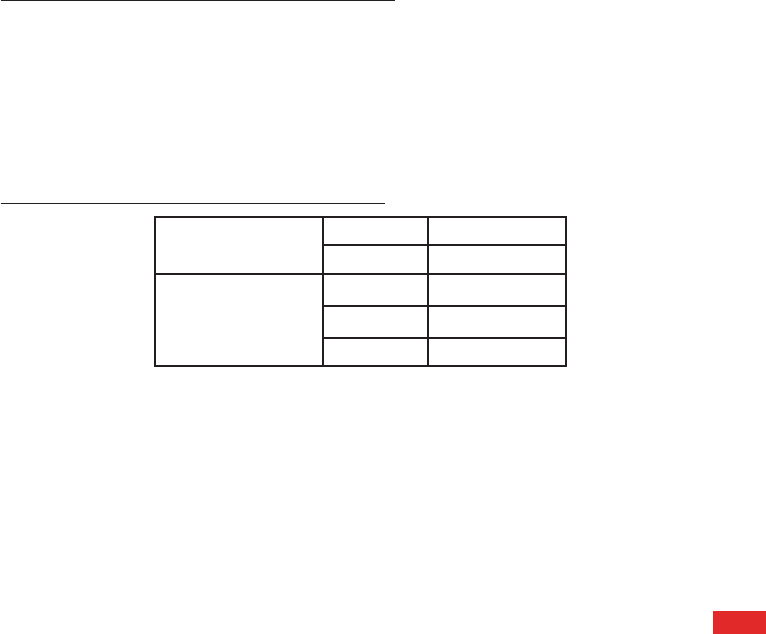
99
Caution Statement of the FCC Radio Frequency Exposure
SAR compliance for body-worn operations is restricted to belt-clip, holsters, or aaccessories that have no metallic
component in the assembly and which provide at least 1.5cm separation between the device, including its
antenna, and the users body.
SpecicAbsortionRate(SAR)valuesforthisequipment
FCC Regulations PCS Head: 0.722 mW/g (1g)
PCS Body: 0.766 mW/g (1g)
CE Information GSM: 0.58 mW/g (1g)
DCS: 0.337 mW/g (1g)
WCDMA: 0.878 mW/g (1g)
The user need to switch off the device when exposed to areas with potentially explosive
atmospheres such as petrol stations, chemical storage depots and blasting operations.

100
C
Calendar
Scheduling an appointment 80
Call barring 40
Call key 3
Calls
Answering 19
Emergency 18
From Call History 16
From Contacts 16
From the Home screen 15
International 18
Rejecting 19
Using speed dial 17
Camera
Default image location 84
Camera button 2
Charging
Battery 7
Connecting
Internet 47
Phone to PC 25
Connections
Dial-up 47
GPRS 48
Internet 52, 54
Proxy 48
VPN 48
Contacts
SIM 78
Viewing 76
D
Date
Setting 32
Delete
Pictures 84
Video clips 84
Device lock 14
Dial-up connection 47
Display
External 2
E
E-mail messages
Composing 66
Downloading 67
Sending 66
Synchronizing 68
Earphone jack 2
Emergency calls 18
End button 3
Exchange Server
Synchronizing 28
External display 2
F
Features
Back 2
Bottom 2
Front 2
File Explorer
Beaming les 45
Index
A
Action key 3
ActiveSync
Copying les 43
Installing 24
Adding programs 42
Alarm
Setting 32
Answering voice calls 19
B
Back key 3
Battery
Charging 7
Inserting 6
Beam
Picture 84
Video clip 84
Bluetooth
Creating a partnership 57
Headset 58
Setting to Discoverable 56
Turning on/off 37, 56
Index

101
Creating folders 45
Deleting les 45
Deleting folders 45
Moving les 45
Moving folders 45
Renaming les 45
Renaming folders 45
Sending a le by e-mail 45
Starting 44
Using 44
Files
Copying 43
Fixed dialing 40
H
Home key 3
Home screen 11
Personalizing 32
Setting 84
Status indicator icons 12
I
Indicators
Battery 2
Bluetooth 2
LED 2
Network 2
Notication 2
Status 12
Input modes
Changing 59
Multipress mode 60
Numeric mode 61
T9 mode 60
Inserting
Battery 6
Installing
ActiveSync 24
Battery 6
Java MIDlets
From a PC 90
From the Internet 90
Mini SD card 6
SIM card 5
Storage card 6
International calls 18
Internet
Connecting 47
Internet Explorer Mobile 52, 54
Changing options 52, 54
J
Java MIDlets
Installing 90
Running 91, 92
K
Key lock 14
Keypad
Locking 38
Unlocking 38
Keys
Action 3
Back 3
Call 3
End 3
Home 3
Left soft 3
L
LED indicator 2
Left soft key 3
Locking
Phone 39
SIM card 38
M
Messaging
Changing options 65
Deleting accounts 65
E-mail 66
Inserting a signature 67
Managing accounts 65
Managing folders 68
Switching accounts 65
Text 66
MIDlets
Running 91, 92
Mini SD card
Installing 6
MMS messaging
Accessing 69, 70
Editing settings 70
Hiding recipient 72
Hiding sender 72
My Text 72
Preset text 72
Requesting delivery notice 72
Sending
Pictures 85
Video clips 85
Using templates 72
Modem Link 50
MSN Hotmail 75

102
MSN Messenger 73
Multi-color LED indicator 2
Multimedia player controls
Locking 38
Unlocking 38
Multipress mode 60
Entering
Punctuation 62
N
Navigation
Pad 3
Numeric mode 61
P
Partnership
Creating 25
Personalizing
Home screen 32
Phone
Back features 2
Bottom features 2
Front features 2
Locking 39
Resetting 41
Restarting 41
Turning off 8
Turning on 8
Phone settings
Call barring 40
Fixed dialing 39
Pictures
Auto Correct 85
Beaming 84
Croping 85
Default location 84
Deleting 84
E-mailing 85
Rotating 85
Saving 85
Sending by MMS 85
Viewing 84
Pictures and Videos
Editing a picture 85
Viewing a picture 84
PIN
Changing 38
PIN2
Changing 39
Pocket MSN 73
Ports
Earphone jack 2
Proles 14
Changing settings 33
Programs
Adding 42
Calendar 80
Contacts 76
File Explorer 44
Creating folders 45
Internet Explorer Mobile 52, 54
Java 90
Modem Link 50
MSN Hotmail 75
MSN Messenger 73
Pictures & Videos 84, 94
Pocket MSN 73
Removing 42
Tasks 82
Voice Notes 83
Windows Media Player 86
Q
Quick List 14
R
Radio mode
Turning on/off 37
Rejecting voice calls 19
Remote synchronization 30
Removing programs 42
Resetting
Phone 41
Restarting
Phone 41
Right soft key 3
S
Scheduling
Synchronization 29
Screen
Settings 31
Settings
Alarm 32
Date 32
Phone
Call barring 40
Fixed dialing 39
Prole 33
Time 32
Settings screens 31
SIM card
Installing 5
Locking 38
Unlocking 38
Speakerphone 2
Speed dial 17

103
Creating 17
Start menu 13
Status indicator icons 12
Storage card
Installing 6
Synchronizing
Creating a schedule 29
E-mail messages 68
Remotely 30
Using USB sync cable 27
With an Exchange Server 28
With a PC 26
T
T9 mode 60
Entering
Punctuation 62
Tasks 82
Text
Changing case 62
Entering 59
New line 62
Plus sign 62
Punctuation 62
Space 62
Symbols 62
Text messages
Composing 66
Sending 66
Time
Setting 32
U
UL Safety Notices 96
Unlocking
keypad 38
Multimedia player controls 38
SIM card 38
URL exception 49
V
Video clips
Beaming 84
E-mailing 85
Playing 84
Sending by MMS 85
Voice mail
Retrieving 19
Voice Notes 83
Volume button 2
W
Windows Media Player 86
Controls 2
Wireless Manager 14, 37